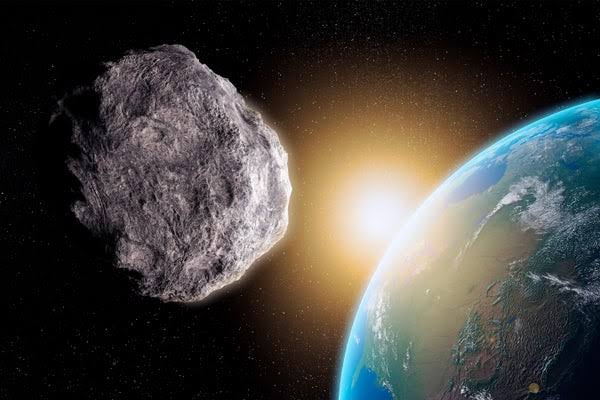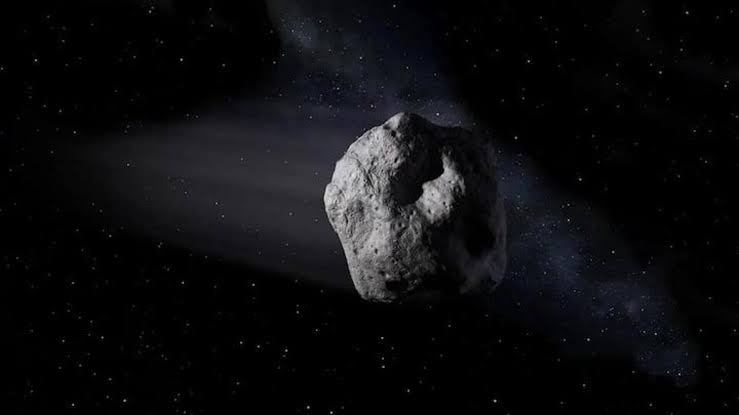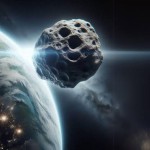Asteroid LY2
In the vast expanse of space, celestial objects frequently pass by our planet, often unnoticed. However, some asteroids capture our attention due to their size, speed, and proximity to Earth. One such asteroid is LY2, a colossal 290-foot behemoth hurtling towards our planet at an astounding speed of 28,156 km/hr. This article delves into the details of this space rock, its potential impact, and the science behind its journey.

The Asteroid LY2: Size and Speed
Asteroid LY2 measures approximately 290 feet in diameter, making it one of the larger near-Earth objects (NEOs) tracked by astronomers. Its speed of 28,156 km/hr (approximately 17,500 mph) adds to the fascination and concern surrounding this celestial body. To put this into perspective, this speed is roughly 23 times faster than the cruising speed of a commercial jetliner.
Origins and Discovery
Asteroids are remnants from the early solar system, formed around 4.6 billion years ago. LY2 is believed to be composed of rock and metal, typical of many NEOs. It was first discovered by a team of astronomers using powerful telescopes designed to scan the sky for potentially hazardous asteroids.
The discovery of LY2 was made possible through advanced tracking systems and space observatories. These facilities continuously monitor the sky, identifying and cataloging NEOs to assess any potential threats they might pose to Earth.
The Journey Towards Earth
The path of asteroid LY2 is influenced by the gravitational pull of planets and other celestial bodies. Its trajectory brings it within a close distance to Earth, leading to increased monitoring and analysis by astronomers. While the exact date of its closest approach remains a subject of ongoing study, current projections suggest it will pass by Earth at a distance that poses no immediate threat.
Potential Impact Scenarios
Despite the close approach, the likelihood of asteroid LY2 impacting Earth is extremely low. However, understanding the potential impact scenarios is crucial for preparedness. If an asteroid of this size were to collide with our planet, it could cause significant damage, particularly if it were to strike a densely populated area.
Scientists use various models to predict the potential effects of an asteroid impact. These models consider factors such as the asteroid's size, speed, composition, and angle of entry into the Earth's atmosphere. While LY2 is not expected to hit Earth, studying such scenarios helps improve our readiness for any future threats.
The Role of Space Agencies
NASA, the European Space Agency (ESA), and other space organizations play a pivotal role in tracking and studying NEOs like LY2. Their efforts include developing early warning systems and potential deflection strategies to prevent future asteroid impacts.
One of the most notable initiatives is NASA's Planetary Defense Coordination Office (PDCO), which coordinates efforts to detect, track, and characterize NEOs. The PDCO also works on developing technologies to deflect potentially hazardous asteroids away from Earth.
The Importance of Public Awareness
Raising public awareness about asteroids and their potential impact is crucial. While the prospect of an asteroid collision may seem like the stuff of science fiction, understanding the science behind these celestial objects and the measures in place to protect our planet is essential.
Educational programs, documentaries, and media coverage play a significant role in informing the public about NEOs. By fostering a better understanding of space and the threats it may pose, we can ensure that society is better prepared for any future challenges.

Asteroid LY2, with its impressive size and speed, serves as a reminder of the dynamic nature of our solar system. While it poses no immediate threat to Earth, its journey underscores the importance of continued vigilance and research. Through the combined efforts of astronomers, space agencies, and public education, we can stay informed and prepared for any potential cosmic challenges that come our way.
By understanding the science behind asteroids and the measures in place to protect our planet, we can appreciate the beauty and complexity of our universe while ensuring the safety of our world. Stay tuned to reliable sources for updates on LY2 and other celestial phenomena that continue to captivate and intrigue us.











